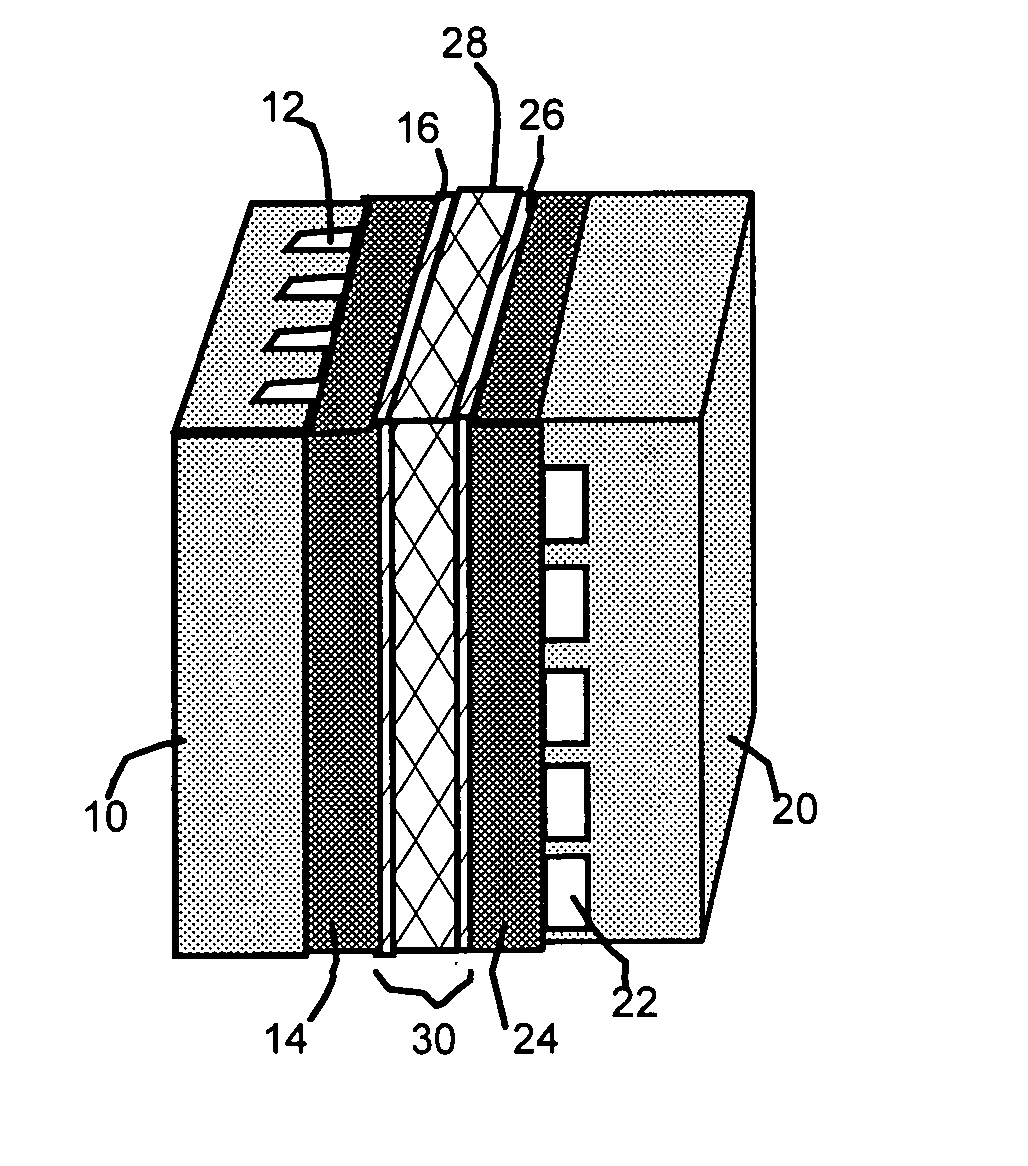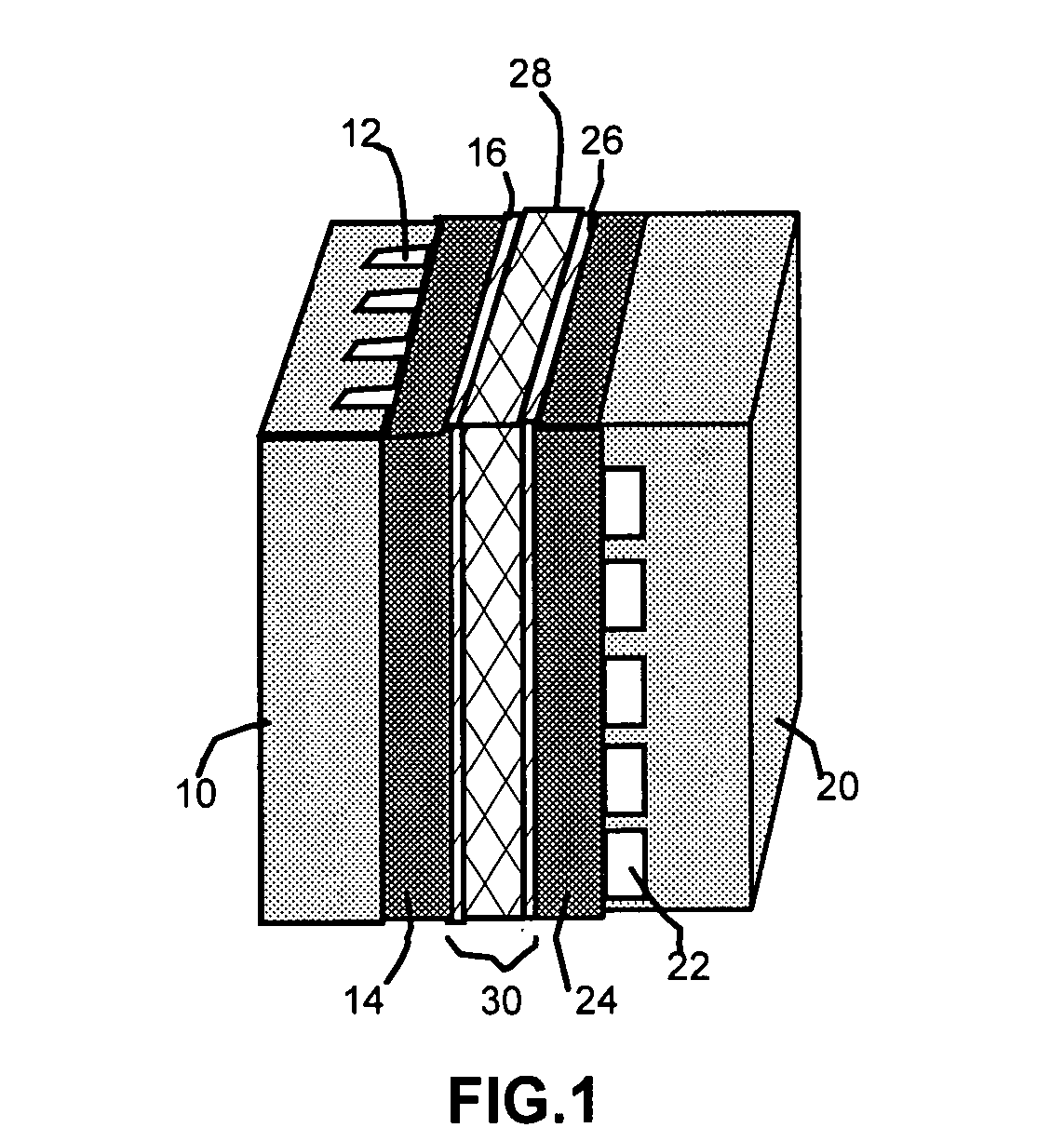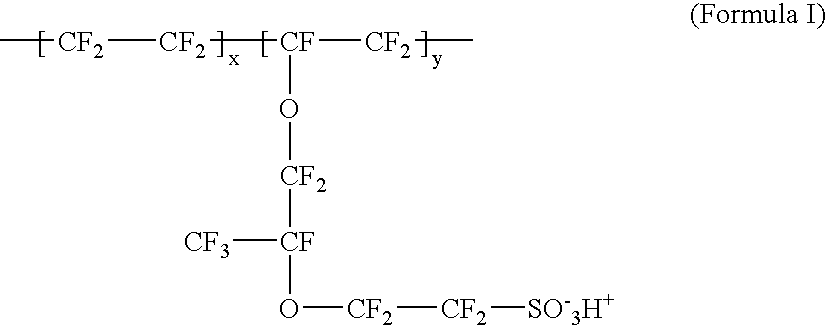Self-humidifying proton exchange membrane, membrane-electrode assembly, and fuel cell
a proton exchange membrane and self-humidification technology, applied in the field of proton exchange membranes for fuel cells, can solve the problems of reducing affecting so as to achieve the effect of maintaining the hydration efficiency of the membran
- Summary
- Abstract
- Description
- Claims
- Application Information
AI Technical Summary
Benefits of technology
Problems solved by technology
Method used
Image
Examples
Embodiment Construction
[0017] The present invention provides a self-humidifying proton exchange membrane (PEM) composition, a membrane-electrode assembly, and a fuel cell. The PEM composition comprises a) a proton-conducting organic or polymer material as a matrix or binder; (b) a catalyst (0.01 to 50% by weight based on the polymer weight) dispersed in the matrix or bonded by the binder to promote a chemical reaction (recombination) between hydrogen and oxygen molecules that permeate into the membrane; and (c) a non-oxide deliquescent material (0.01-50% by weight also based on the polymer weight) dispersed in the matrix or bonded by the binder for capturing and retaining water in the membrane to facilitate proton transport therein.
[0018] The matrix or binder material functions as a proton conductor, as well as a host or support for the water generation-promoting catalyst and the water-capturing and water-retaining deliquescent material. Selected deliquescent materials may also form ionically conductive ...
PUM
 Login to View More
Login to View More Abstract
Description
Claims
Application Information
 Login to View More
Login to View More - R&D
- Intellectual Property
- Life Sciences
- Materials
- Tech Scout
- Unparalleled Data Quality
- Higher Quality Content
- 60% Fewer Hallucinations
Browse by: Latest US Patents, China's latest patents, Technical Efficacy Thesaurus, Application Domain, Technology Topic, Popular Technical Reports.
© 2025 PatSnap. All rights reserved.Legal|Privacy policy|Modern Slavery Act Transparency Statement|Sitemap|About US| Contact US: help@patsnap.com



